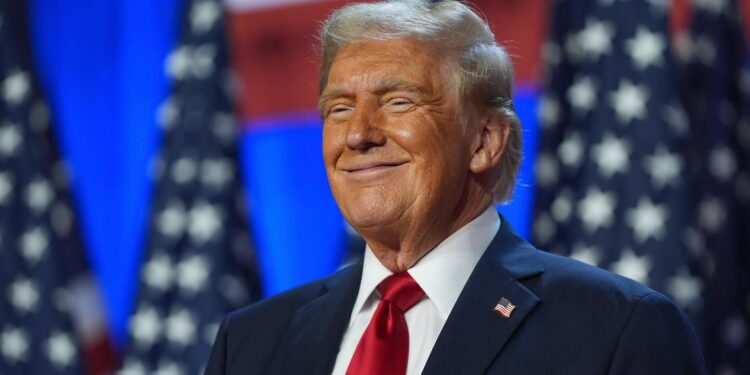Donald Trump has secured a remarkable $50 billion in revenue from tariffs, as global trading partners appear to yield to mounting pressure amid escalating trade tensions, according to the Financial Times. The substantial haul underscores the administration’s aggressive approach to reshaping international commerce, with critics warning of potential ripple effects across the global economy. This latest development highlights the growing complexities and high stakes of the ongoing trade battles shaping markets worldwide.
Donald Trump’s Tariff Strategy Yields Massive Revenue Amid Global Trade Hesitation
In a bold move that has reshaped the dynamics of global commerce, the tariff policies implemented under former President Donald Trump have generated an unprecedented $50 billion in government revenue. This surge is primarily attributed to increased customs duties on imports from key trade partners, pressuring countries hesitant to engage in retaliatory measures. Analysts suggest that this hesitation-widely described as the global ‘chicken out’ reaction-has allowed the U.S. to capitalize on trade tensions without triggering full-scale economic retaliation or destabilization.
Key factors contributing to this outcome include:
- Reluctance of major economies to escalate tariff wars further.
- Strategic realignment in global supply chains to minimize exposure.
- Increased domestic manufacturing incentives bolstered by tariff revenues.
- Diplomatic maneuvers positioning the U.S. as a tough but calculated negotiator.
| Country | Tariff Rate Increase | Trade Volume Affected | Estimated Revenue ($bn) |
|---|---|---|---|
| China | 25% | 150B USD | 20 |
| European Union | 10% | 100B USD | 12 |
| Canada | 15% | 80B USD | 8 |
| Mexico | 15% | 70B USD | 5 |
Economic Impact of US Tariffs on International Markets and Supply Chains
The imposition of tariffs by the United States has unleashed a ripple effect across international markets, disrupting established supply chains and compelling global businesses to rethink their strategies. Foreign exporters grappling with increased costs are facing dwindling competitiveness in the American market, often opting to divert goods elsewhere or absorb the financial burden. This recalibration has been particularly pronounced in Asia and Europe, where manufacturing hubs now struggle with higher input costs and delayed shipments. Moreover, secondary markets that rely on raw materials sourcing from tariff-affected regions report unpredictable price volatility, creating a climate of uncertainty that dampens investment and expansion plans.
Supply chain experts have identified several adaptive responses that companies are employing to mitigate tariff-induced pressure:
- Reshoring production: Returning manufacturing operations closer to home to sidestep tariff barriers.
- Supplier diversification: Broadening supplier bases to avoid overreliance on tariff-affected countries.
- Inventory buffering: Stockpiling goods to hedge against potential future disruptions.
| Region | Tariff Exposure | Primary Impact |
|---|---|---|
| East Asia | High | Export delays & cost surges |
| Europe | Moderate | Supply chain reconfiguration |
| Latin America | Low | Increased market interest |
Policy Recommendations for Navigating Rising Trade Barriers and Protecting Domestic Growth
Enhancing resilience in the face of escalating trade barriers demands a multifaceted strategy centered on safeguarding domestic industries while fostering global competitiveness. Governments should prioritize investment in advanced manufacturing technologies and workforce retraining programs to mitigate the disruptive impact of tariffs on supply chains. Equally important is the establishment of streamlined trade facilitation frameworks that reduce bureaucratic bottlenecks, allowing exporters to adapt swiftly to evolving tariff regimes. Policymakers must also pursue diversified trade partnerships beyond traditional allies, lessening overreliance on specific markets vulnerable to protectionist measures.
To promote sustainable economic growth amid heightened trade tensions, the following actions are crucial:
- Implement dynamic tariff evaluation mechanisms that respond to market shifts without stifling innovation.
- Encourage public-private collaborations to develop indigenous supply chains, reducing dependency on volatile international suppliers.
- Strengthen export credit and insurance schemes to shield domestic companies from financial risks associated with retaliatory tariffs.
- Leverage digital trade platforms to open new market avenues and enhance transparency.
| Policy Focus | Expected Outcome |
|---|---|
| Advanced Manufacturing Incentives | Improved productivity & job retention |
| Diversification of Trade Partners | Reduced exposure to tariff shocks |
| Export Risk Mitigation Programs | Enhanced financial security |
| Digital Trade Expansion | Increased market competitiveness |
In Summary
As the global trade landscape adjusts to the ramifications of the latest tariffs, Donald Trump’s $50 billion haul underscores the shifting balance of economic power and the challenges faced by international partners. Whether this strategy will yield sustained benefits or provoke further retaliation remains to be seen, but for now, the unprecedented scale of the tariffs marks a defining moment in contemporary trade policy.










